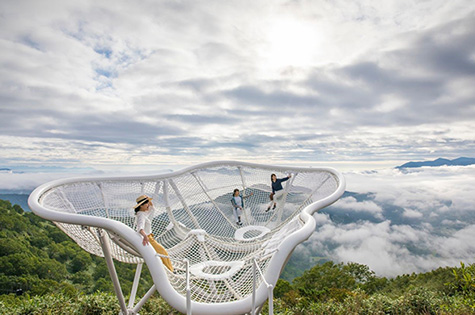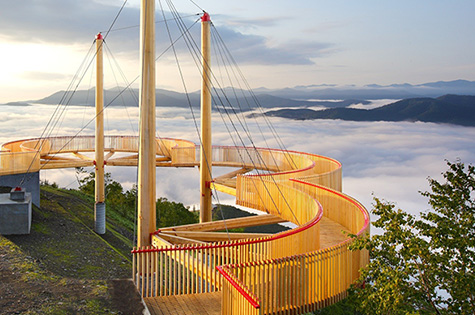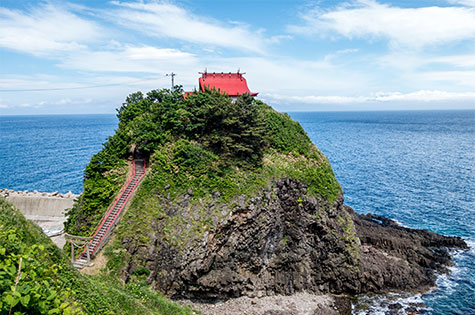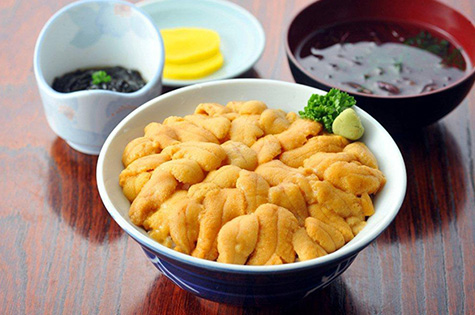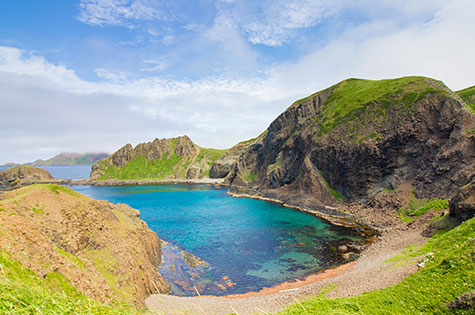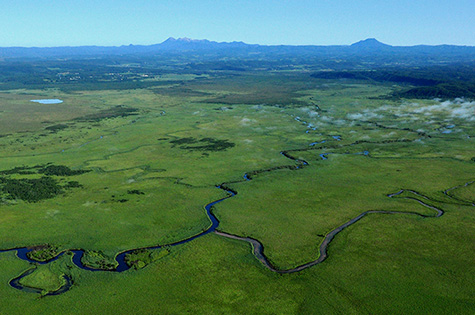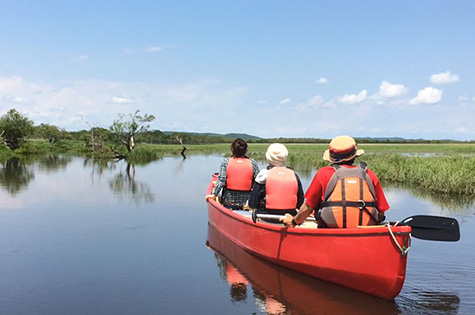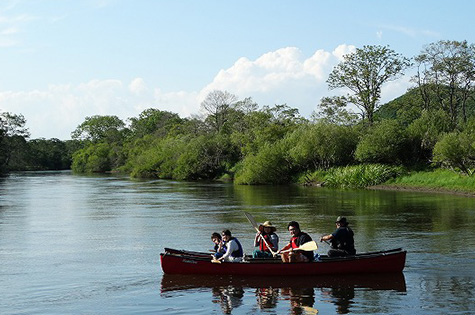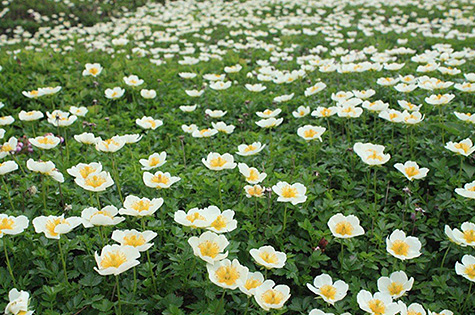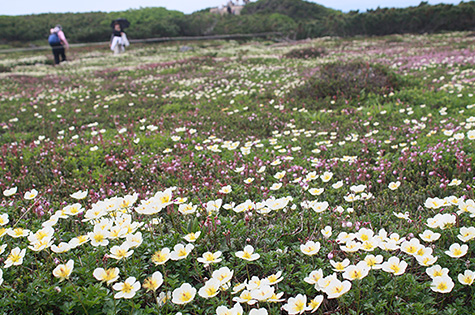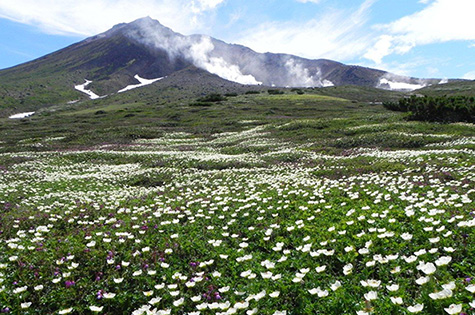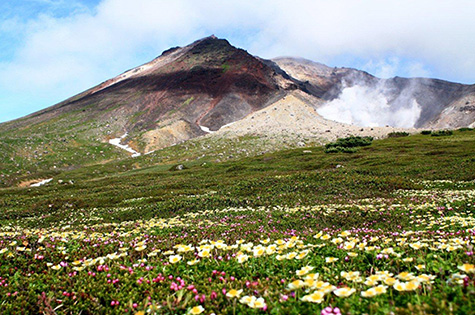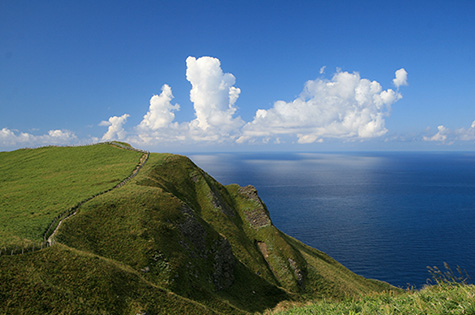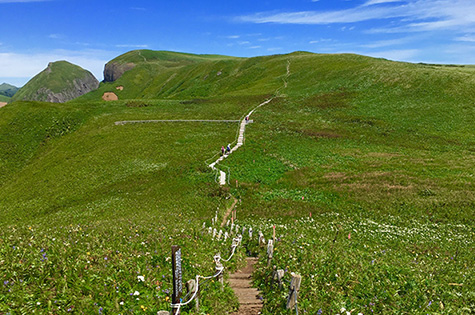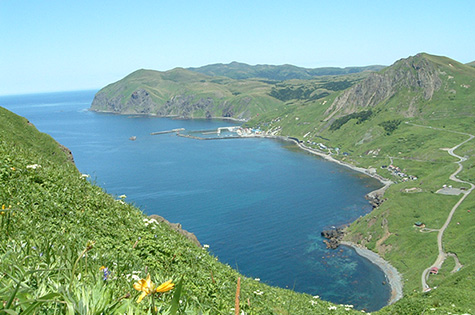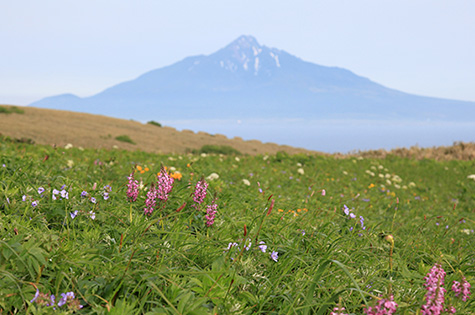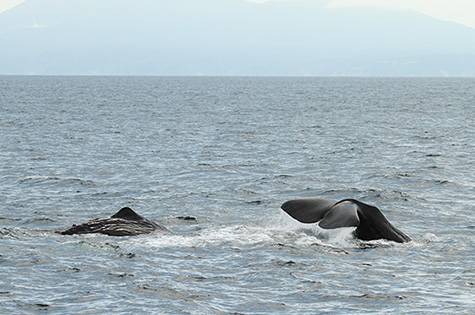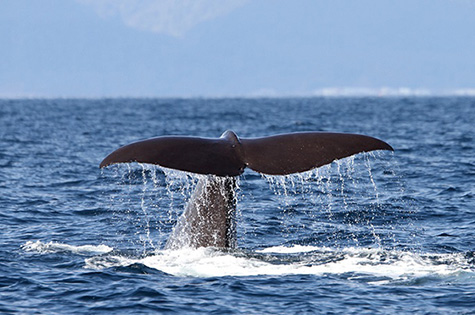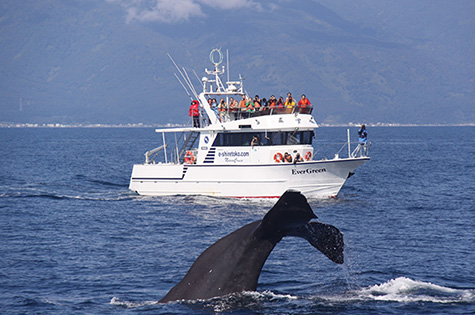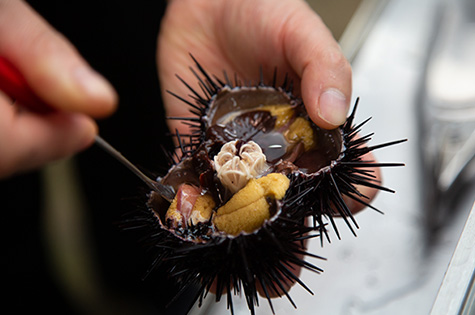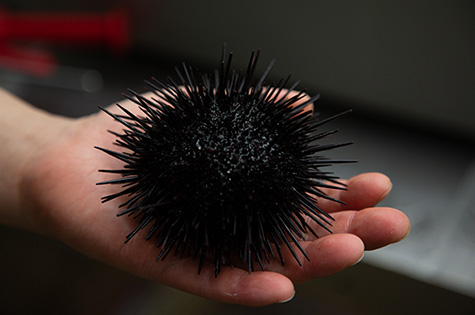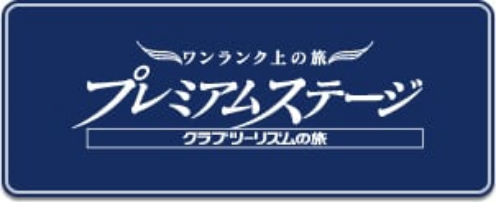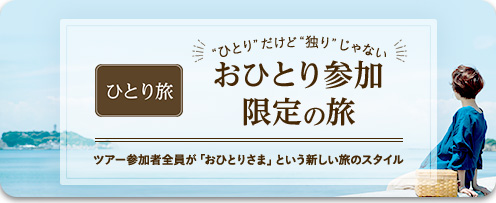

Introducing Hokkaido 's summer traditions! Hokkaido For trips and tours to Club Tourism! We will support you if you take a tour with a tour conductor! Introducing tours to Furano and Biei where lavender and other flowers bloom, Rishiri Island and Rebun Island, Daisetsuzan National Park where alpine plants bloom, and Shiretoko peninsula where you can feel the great nature, Hokkaido full of summer attractions, and Hokkaido area basic information (summer). Searching and booking tours is easy.
Introducing Hokkaido in summer that you've never seen before from Kanto region
-
Tomamu's Sea of Clouds
-
Okushiri Island
-
Lake Toya Long-run Fireworks Festival
-
Shakotan Peninsula
-
Rishiri Island and Rebun Island
-
Kushiro Marsh Canoe
-
[Daisetsuzan] Asahidake/Susoaidaira route
-
[Rebun Island] Momoiwa to Shiretoko Route
-
Sperm whale
-
Brown bear
-
Sea urchin
-
Solo-Only Travel
-
Check the temperature and clothing for this season
Tomamu's Sea of Clouds
~A magnificent view created by nature~
At the Unkai Terrace of Hoshino Resort Tomamu, located at an altitude of 1,088 meters, you can witness the dynamic sea of clouds flowing over Hidaka. The Unkai Terrace offers a unique "Cloud Walk" experience that gives you the sensation of "walking on clouds." In addition to the breathtaking views, you can also encounter native plants and animals that inhabit the surrounding forest. Be sure to visit Tomamu to experience this stunning panorama.
Find out more! Check out our featured articles here
Okushiri Island
~To Okushiri Island, home to untouched nature and delicious food~
Located in the southwest Hokkaido, this island has an area of approximately 142 km and a circumference of approximately 84 km. It is said that the name of the island comes from the Ainu word "Iku-Shiri," which means the island beyond. Enjoy a trip that can only be experienced on this island, with its abundant natural beauty, fresh seafood such as sea urchins, and spectacular scenery.
Find out more! Check out our featured articles here
Lake Toya Long-run Fireworks Festival

(Image)
~Enjoy the fireworks while staying at a hotel or inn~
This fireworks festival takes place from Apr. 28th to the end of Oct.. It has a different atmosphere depending on the season, from spring to autumn, so we recommend visiting multiple times to see different views. Approximately 450 fireworks are launched in 20 minutes each day. Large flowers bloom one after another in the night sky from boats floating on the lake. It's hard to choose between the beauty of the fireworks reflected on the water and the fireworks in the night sky.
Shakotan Peninsula
- Spectacular "Shakotan Blue" -
The Shakotan Peninsula juts out into the Sea of Japan, offering views of the bright blue water known as "Shakotan Blue." The peninsula features several capes, including Cape Kamoi, which provides a spectacular view of the ocean on both sides. Additionally, Shimamui Kaigan is renowned for its sweet and fresh sea urchins.
Find out more! Check out our featured articles here
Rishiri Island and Rebun Island
~The farthest summer resort~
In summer, the climate Rishiri Island Rebun Island is refreshingly cooler, about 10 degrees Celsius, than in Tokyo.
Enjoy alpine plants and spectacular views on this island brimming with nature.
And above all, if you want to enjoy seafood, summer is the best time! Enjoy the island's specialties such as sea urchin, button shrimp, and salmon roe!
Find out more! Check out our featured articles here
An activity you've never tried before: canoeing in the Kushiro Marshlands
Kushiro Marsh Canoe
~A tranquil paradise with hundreds of species of plants and animals~
Kushiro is Japan's largest untouched marsh. Immerse yourself in nature's beauty as you explore the Kushiro River flowing through the marsh, experience a world where only the sounds of nature can be heard, and encounter wildlife such as Ezo deer, Ezo red foxes, and Steller's sea eagles. A nature guide will accompany you in a rowboat, ensuring that even beginners can participate safely. Come and enjoy this tranquil experience and escape the hustle and bustle of everyday life.
Find out more! Check out our featured articles here
An activity you've never tried before: hiking in a paradise of alpine plants
[Daisetsuzan] Asahidake/Susoaidaira route
~ "The Garden of the Gods" where alpine plants bloom in full glory ~
Daisetsuzan National Park, also known as the "ridge of Hokkaido," includes the magnificent mountains centered around Asahidake, the highest peak in Hokkaido, and the source areas of the Ishikari River and Tokachi River. Every year from mid-Jul. to mid-Aug., pretty alpine plants bloom against the backdrop of magnificent nature. This route uses a ropeway, so you can gain altitude without having to walk, and you can enjoy large colonies of Ainguruma, Siberian azalea, Siberian kogozakura, and other flowers that only bloom at high altitudes.
[Rebun Island] Momoiwa to Shiretoko Route
~A spectacular hike through the northernmost natural flower fields!~
Known as the Flower Island, Rebun Island is home to approximately 300 species of alpine plants that bloom in the summer and is a treasure trove of spectacular hiking spots.
Among them, the "Momoiwa to Shiretoko Route" is popular as a representative course of Rebun Island, where you can enjoy alpine flower fields while looking at the cliffs and blue sea of the west coast and Mount Rishiri that seems to be floating in the sea. Enjoy an open-air hike while feeling the happiness of being surrounded by flowers.
Find out more! Check out our featured articles here
Wildlife you haven't seen yet - World Natural Heritage Shiretoko
Sperm whale
~The "King of the Sea" boasts impressive size and diving capabilities~
The sperm whale is the largest of all toothed whales, with the average male reaching 18m in length and the average female reaching 11m in length, and the maximum weight of the male reaching 45t and the average weight of the female reaching 15t.
Its most distinctive external feature is its large head, which takes up about one-third of its body. It is by far the largest of all toothed whales, and uses ultrasound to determine its position around it. Sperm whales emit clicking sounds from deep inside their heads. This helps them to efficiently emit the sound forward. Come see the sperm whales' lifestyle at Rausu, a World Heritage Site!
Brown bear
~ Symbol of the World Natural Heritage Shiretoko
Bears were objects of worship for the Ainu people. They believe that gods usually take human form and wear various clothes when they descend to the human world. Kimun Kamuy is thought to be a god who takes the form of a bear wearing black clothes. The Shiretoko is an area with a high density of wild brown bears. Not only can you encounter them on land, but if you look away from the pier from your boat, you may even be able to see them catching salmon.
Find out more! Check out our featured articles here
Summer Hokkaido gourmet foods you haven't tried yet
Sea urchin
~The best in the world! Enjoy the finest cuisine!~
The sea urchin you've been eating until now isn't really sea urchin! If you go to Hokkaido, you should definitely try the king of summer delicacies, exquisite sea urchin.
Sea urchins' staple food is kelp and other seaweed. The better the quality of the kelp, the better the taste of the sea urchin. Please enjoy this supreme luxury in a famous area for high-quality kelp.
Find out more! Check out our featured articles here
Solo-Only Travel
Average summer temperatures in Hokkaido and what to wear
The information below is for reference only. Please check the temperature and other information in advance before making your preparations.
Below are the maximum and minimum temperatures.
| Tokyo | Sapporo | Asahikawa | Abashiri | |
|---|---|---|---|---|
| Apr. |
23.4/5.3 |
16.4/-1.5 |
16.9/-6.3 |
18.6/-2.8 |
| May. |
28.5/10.5 |
27.6/2.2 |
30.5/-0.4 |
32.1/-0.2 |
| Jun. |
30.2/14.7 |
29.2/9.7 |
31.3/6.5 |
25.4/4.8 |
| Jul. |
35.4/21.0 |
33.1/15.9 |
32.6/13.1 |
28.6/13.1 |
| Aug. |
38.3/20.3 |
31.7/14.9 |
33.5/12.2 |
32.4/13.4 |
| Sep. |
35.7/15.7 |
28.6/6.6 |
26.7/1.6 |
29.5/7.2 |
| Oct. |
31.3/12.0 |
24.6/3.7 |
24.1/-0.7 |
22.8/2.1 |
| Nov. |
21.5/5.9 |
16.4/-3.0 |
15.9/-6.4 |
17.3/-3.8 |
| Dec. |
17.6/0.5 |
11.0/-5.6 |
8.2/-14.5 |
11.8/-9.4 |
| Jan. |
14.4/-1.4 |
2.7/-12.2 |
0.0/-20.1 |
0.6/-17.8 |
| Feb. |
20.9/-0.5 |
7.6/-11.3 |
7.1/-21.2 |
7.9/-14.9 |
| Mar. |
25.3/3.2 |
9.0/-7.8 |
13.2/-16.9 |
11.2/-11.0 |
Summer Jul. to Aug.
We recommend wearing clothes that are easy to adjust your body temperature according to the temperature.

[Jul.]
Short sleeves are fine during the day, but if you're going out at night or hiking in the mountains or by a lake, it's a good idea to bring a thin jacket.
[Aug.]
The sun is strong inland, and fog sometimes appears along the coastline. After Obon, the temperature starts to drop suddenly.
Easy online travel consultation
Customer Co-Creation Activities
Latest Tours and Information
Club Tourism Travel Brand
Overseas Travel
Club Tourism Internet Membership Information
-
A wide range of services exclusively available to members
-
Search for trips anytime, anywhere!
-
Be the first to know about the best seasonal travel deals!

